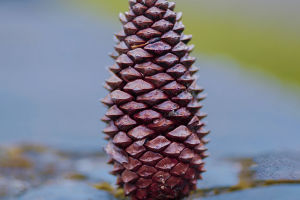Snake Plant is a common succulent plant belonging to the Asparagaceae family, genus Sansevieria. It is one of the popular indoor decorative plants, cherished for its unique appearance, drought-tolerant nature, and air-purifying properties.
In this article, we will delve into the varieties, characteristics, care methods, and benefits of Snake Plants.
Snake Plants come in several varieties, including:
1. Upright Snake Plant: This type of Snake Plant has upright leaves resembling the tongue of a snake, hence the name "Mother-in-law's Tongue." Its leaves are typically dark green with light-colored spots or patterns, presenting an elegant overall appearance.
2. Spear-like Snake Plant: The leaves of this variety are narrow and covered with small protrusions, giving them a spiky appearance, hence the name "Snake Plant." The leaf color is usually dark green, with some varieties featuring light yellow or white veins.
3. Cylindrical Snake Plant: This variety of Snake Plant has similar leaf morphology to the upright type but with pointed tips and some varieties having finely serrated leaf margins. Its leaf colors are more vibrant, commonly including yellow-green and gray-green hues.
Snake Plants possess the following characteristics:
1. Drought Tolerance: Snake Plants are highly adaptable and can withstand dry conditions well, requiring minimal watering. Hence, they are an ideal choice for indoor cultivation.
2. Air Purification: Snake Plants excel in air purification. They absorb harmful indoor gases such as formaldehyde and benzene and convert them into oxygen. This ability significantly improves indoor air quality, contributing to better health for inhabitants.
3. Easy Maintenance: With slow growth rates and low light and temperature requirements, Snake Plants only need regular dusting of leaves and occasional watering, making them suitable for modern busy lifestyles.
To effectively care for Snake Plants, consider the following tips:
1. Light: Snake Plants prefer bright light but can also tolerate low-light conditions. Place them in a bright spot indoors, avoiding prolonged exposure to direct sunlight to prevent leaf damage.
2. Temperature: Snake Plants have a wide temperature tolerance range, with optimal growth temperatures between 15°C to 30°C. They can tolerate lower temperatures in winter but should avoid prolonged exposure to temperatures below 10°C.
3. Watering: Snake Plants are drought-tolerant and do not require frequent watering. Typically, water them every 7-10 days, increasing watering frequency slightly during hot summer temperatures, but avoid waterlogging.
4. Fertilization: During the growing season, apply diluted liquid fertilizer once a month to promote Snake Plant growth.
5. Regular Cleaning: Periodically wipe the leaves of Snake Plants with a damp cloth to remove dust, maintaining clean leaves to facilitate photosynthesis.
Caring for Snake Plants not only beautifies the home environment but also brings numerous benefits, including:
1. Improved Air Quality: Snake Plants possess excellent air purification capabilities, absorbing harmful gases such as formaldehyde and benzene, and releasing oxygen, thereby improving indoor air quality and enhancing residents' health.
2. Increased Indoor Humidity: Snake Plants have some evaporative properties, increasing indoor humidity levels, which is beneficial for alleviating dry climates, especially for people exposed to prolonged air conditioning.
3. Enhanced Mood: The unique appearance and tactile experience of Snake Plants can alleviate stress, soothe emotions, and uplift mood when admired.
4. Added Enjoyment: Tending to Snake Plants and observing their growth changes not only adds enjoyment to life but also cultivates patience and responsibility.
By cultivating Snake Plants in homes and offices, one can create a comfortable, healthy living, and working environment, enabling people to fully enjoy the beauty of life.


